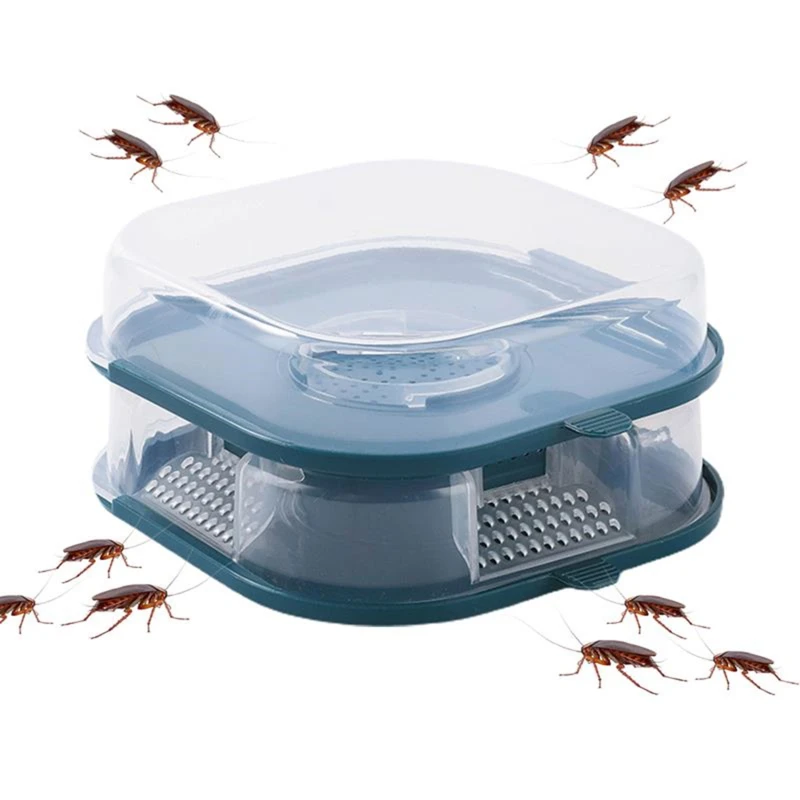Chemical-Free Cockroach Management: Effective Strategies for a Pest-Free Home
Introduction: Cockroach infestations can be a persistent challenge for homeowners, but the reliance on chemical…


Introduction:
Cockroach infestations can be a persistent challenge for homeowners, but the reliance on chemical pesticides raises concerns about environmental impact and potential health risks. This article explores effective non-chemical cockroach control strategies that prioritize both pest management and the well-being of your home environment.
Understanding Cockroach Behavior:
To address cockroach infestations without resorting to chemicals, it’s crucial to understand their behavior. Cockroaches are attracted to food, water, and shelter. By focusing on these factors, non-chemical control methods can disrupt their living conditions, making your home less inviting to these pests.
Sanitation Practices:
One of the fundamental non-chemical approaches to cockroach control is maintaining high sanitation standards. Regularly clean and remove food debris, fix leaky faucets, and store food in airtight containers. Denying cockroaches access to food and water sources is a foundational step in effective pest management.
Natural Cockroach Repellents:
Natural repellents can be powerful allies in non-chemical cockroach control. Substances like diatomaceous earth, boric acid, and catnip are known for their cockroach-repelling properties. Sprinkle these in areas prone to cockroach activity to create a barrier that discourages their presence.
Sealing Entry Points:
Cockroaches are adept at finding entry points into homes. Non-chemical control includes thorough inspection and sealing of potential entry points, such as cracks in walls, gaps around windows, and openings around pipes. Closing these access routes denies cockroaches entry and helps prevent infestations.
Use of Essential Oils:
Essential oils are a natural and non-chemical way to deter cockroaches. Scents like peppermint, citrus, and tea tree oil are known to repel these pests. Create a solution by diluting essential oils in water and use it as a spray in areas where cockroaches are likely to hide.
Sticky Traps and Baits:
Sticky traps and baits can be effective in non-chemical cockroach control. Place sticky traps along common cockroach pathways and in areas of high activity. For bait, use a mixture of boric acid and sugar. Cockroaches are attracted to the bait and carry it back to their nests, effectively reducing the population.
Heat and Cold Treatments:
Cockroaches are sensitive to extreme temperatures. Non-chemical control can involve exposing infested items or areas to high heat or extreme cold. Heat treatments, such as steam cleaning, can be effective, as can placing infested items in the freezer.
Introduction of Natural Predators:
Introducing natural predators into your home environment can contribute to non-chemical cockroach control. Certain species of lizards, birds, and even some insects are natural enemies of cockroaches. Encouraging these predators can create a balance that helps keep cockroach populations in check.
Regular Monitoring and Prevention:
Non-chemical cockroach control is an ongoing process that requires regular monitoring and preventive measures. Routinely inspect your home for signs of cockroach activity, implement the mentioned strategies, and make adjustments as needed. Consistency is key in maintaining a pest-free environment.
Linking to Non-Chemical Cockroach Control:
Discover effective non-chemical methods for cockroach control at Non-Chemical Cockroach Control. Explore strategies that prioritize your home’s well-being while effectively managing cockroach infestations. Embrace a chemical-free approach for a healthier and harmonious living space.
Conclusion:
Non-chemical cockroach control is not only possible but also advantageous for creating a healthy living environment. By understanding cockroach behavior, implementing natural repellents, sealing entry points, and adopting preventive measures, homeowners can effectively manage cockroach infestations without resorting to chemical pesticides. Embracing these non-chemical strategies contributes to a harmonious and sustainable home.







